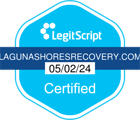Dilaudid: Prescription Opioids and Addiction
The number of deaths related to opioid use has increased dramatically over the years. Of the estimated 47,000+ deaths from opioid-related overdoses in the United States in 2019, over 32,000 of those deaths involved the use of an opiate.2 Opioid use disorder frequently requires treatment at a detox facility. Many people have found a life free from opioids after detox support and complete treatment from medical professionals.
What is Dilaudid?
This opioid, like others in its class, has a high potential for addiction, especially when used over a long period of time. Aside from its habit-forming potential, Dilaudid can cause serious breathing issues that may become life-threatening. This is dangerous for those who may already suffer from breathing issues like asthma or lung disease, or those who take higher doses of the drug than prescribed. Mixing alcohol or certain other drugs with Dilaudid can cause lung problems, coma, and even death.
Development
This drug was first developed in Germany in 1921, patented as Dilaudid in 1923, and had begun being used by doctors in 1926. It is made in a way that is similar in structure to morphine.
FDA Approval and Modern Use
The FDA approved Dilaudid for use in the United States in 1984. By 2019, hydromorphone, with over 2.5 million prescriptions written, ranked as the 212th most prescribed medicine in America.3
Be Brave. Get Help.
Forms and Dosages
An immediate-release oral tablet is the most commonly prescribed form. The effects of the pain medication are felt within 15-30 minutes. The pills come in strengths of 2, 4, and 8 mg and taken every 4-6 hours, usually for severe pain and not for long-term use.
An extended-release tablet or capsule taken once per day is for chronic pain conditions.
An oral solution of 2.5 to 10 mg is taken every 3-6 hours.
There is also a liquid form that is injected via IV.
Similar to other opiates, it works by changing the way your mind and body react to pain. The drug works on the nervous system’s opioid receptors to change a person’s response to pain for the better.
Street Names
- Dillies
- Dust
- Juice
- D
- Footballs
- Smack
Dilaudid Abuse
Recreational Use
When prescription Dilaudid is taken over a time, the brain lessens its release of natural dopamine since the opiate is now doing the job instead. At that point, a person will find it extremely difficult to experience normal, pleasurable feelings without taking the drug.
Taking the opiate recreationally in larger dosages than prescribed, puts you at a greater risk for addiction.
Ways in Which Dilaudid is Abused
Those misusing this drug can take pills in different ways:
- Swallow the tablets
- Chew them for even quicker effects
- Crush them for snorting or smoking
- Inject the drug intravenously or muscularly by crushing the pill and mixing with a liquid
Health Risks and Dilaudid Addiction
Regular abuse and addiction can cause the following health issues:
Dilaudid Withdrawal
Withdrawing from this drug requires medical supervision to avoid serious complications. Some of the symptoms that go along with withdrawal are:
- Clammy and cold skin
- Diarrhea
- Tremors
- Body cramps
- Sweats
- Heightened blood pressure
- Flu-like symptoms
- Muscle and/or bone pain
- Feeling restless
- Intense cravings for the drug
- Vomiting
The period of withdrawal can take up to two weeks. In a rehab treatment facility or hospital, medications can be given to help manage withdrawal.
A different, longer-acting opioid that doesn’t have the same euphoric effects may be used to reduce cravings and discomfort. These medications include methadone and buprenorphine. Other medicines that treat withdrawal symptoms are clonidine and suboxone.
Myths
Although this drug can be highly addictive, not everyone who takes it for pain will misuse it. Some people are at a higher risk for abuse and addiction than others.
Sometimes a dosage increase is needed to help with pain management. It doesn’t always lead to addiction. The body can develop a tolerance, making a certain dosage less effective over time.
Dilaudid is Helpful for Relieving Pain But Can Be Addictive
https://www.drugabuse.gov/related-topics/trends-statistics/overdose-death-rates
https://clincalc.com/DrugStats/Top300Drugs.aspx
https://www.samhsa.gov/data/sites/default/files/NSDUH-FFR1-2016/NSDUH-FFR1-2016.pdf
https://www.samhsa.gov/data/sites/default/files/NSDUH-FFR1-2016/NSDUH-FFR1-2016.pdf
https://www.samhsa.gov/data/sites/default/files/NSDUH-FRR1-2014/NSDUH-FRR1-2014.pdf


 Matthew Beck B.A, M.A, LMFT
Matthew Beck B.A, M.A, LMFT 


